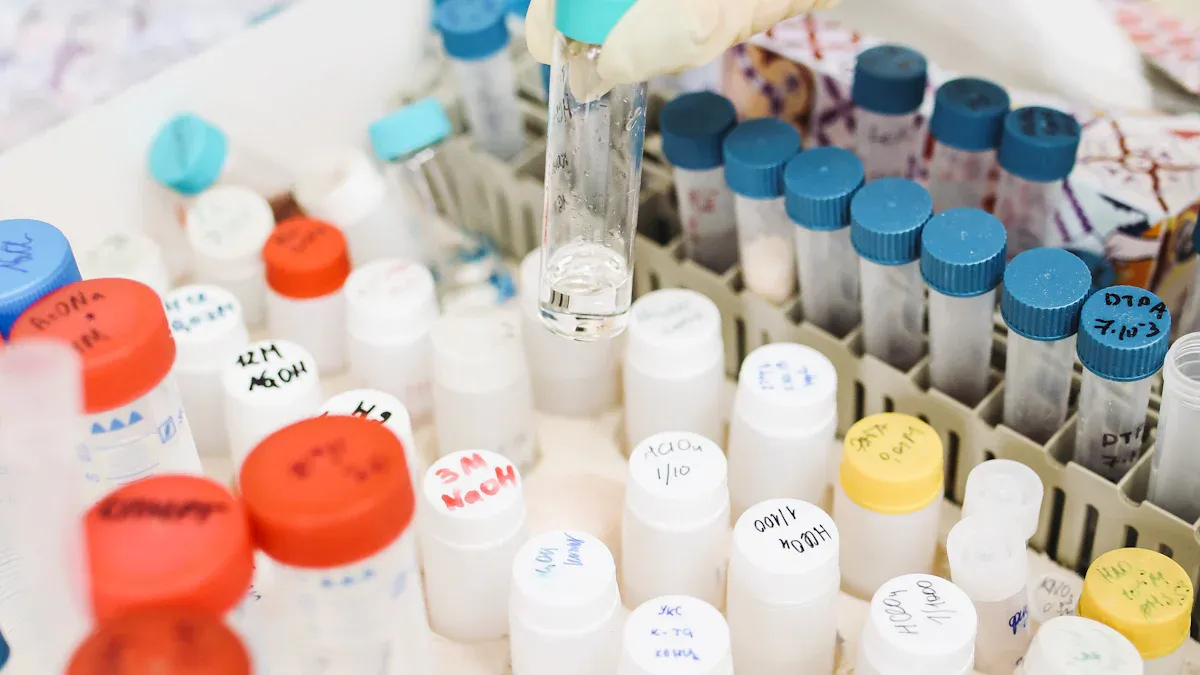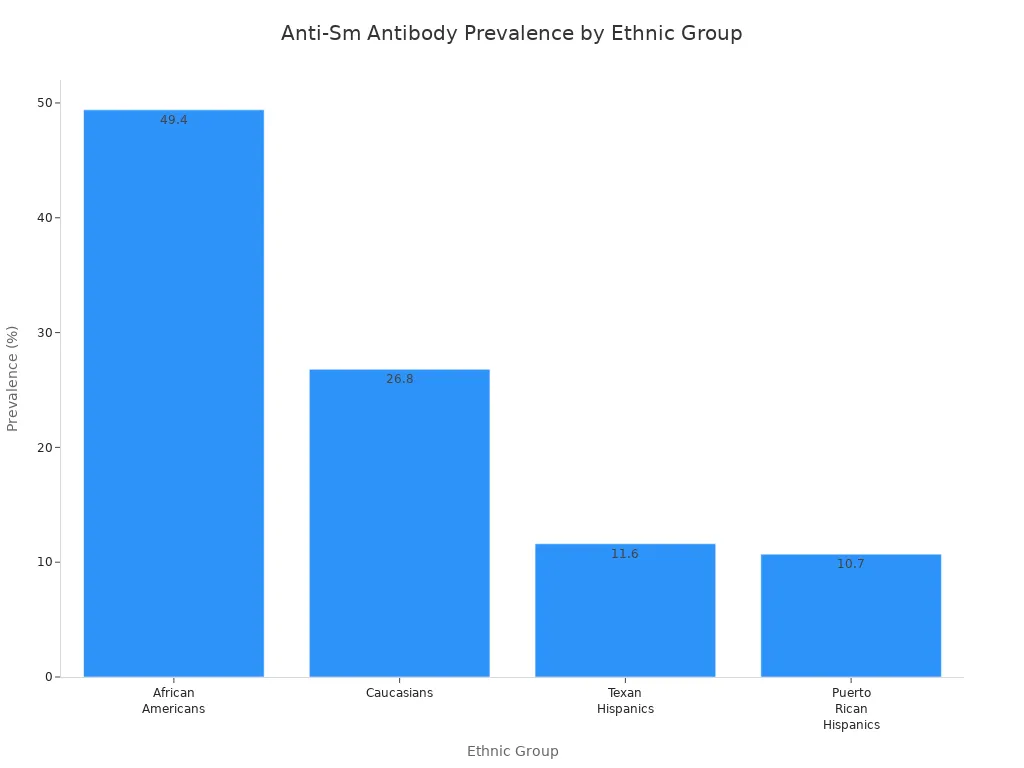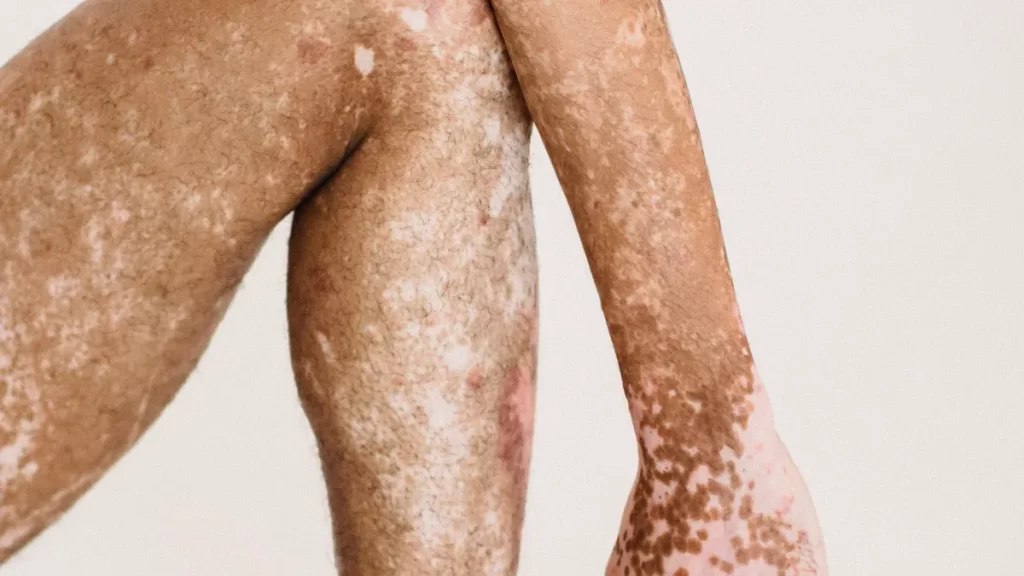News & Events
Making Sense of Smith Antibody Results in Lupus

If you see a smith antibody result while being checked for lupus, you might feel uncertain about what it means. The smith antibody is highly specific for lupus, which means it helps doctors know if you have systemic lupus erythematosus (SLE).
- The smith antibody targets the SmD antigen and meets 60% of the criteria needed for an SLE diagnosis.
- Many people think a positive antibody result always gives clear answers, but testing can be complex.
Key Takeaways
- The Smith antibody is highly specific for systemic lupus erythematosus (SLE) and helps doctors confirm a lupus diagnosis.
- A positive Smith antibody test indicates a higher likelihood of lupus, but only about 30% of lupus patients test positive for it.
- You can still have lupus even if your Smith antibody test is negative; doctors use other tests and symptoms for diagnosis.
- If you test positive for Smith antibodies, discuss with your doctor about potential risks and treatment options for lupus management.
- Always seek clarification from your doctor about your test results and their implications for your health.
Smith Antibody and Lupus
What Is Smith Antibody?
You may wonder what the smith antibody means when you see it on your lupus test results. The smith antibody, also called anti-Sm antibodies, targets the smith antigen. This antigen is a small nuclear protein involved in RNA splicing. Doctors use the smith antibody to help identify systemic lupus erythematosus (SLE). The smith antibody is highly specific for SLE, with a specificity close to 97%. You will find it in about 15–30% of people with lupus, and it appears more often in Asian patients.
Here is a table to help you understand the main aspects of the smith antibody:
| Aspect | Details |
|---|---|
| Definition | Specific antibodies associated with systemic lupus erythematosus (SLE). |
| Prevalence | Present in 15–30% of SLE patients, more common in Asians. |
| Specificity | Most specific antibody for SLE with a specificity close to 97%. |
| Associated Conditions | Commonly linked to nephritis, vasculitis, and rash. |
| Role in Immune System | Directed against small nuclear RNA-associated proteins (snRNP) involved in RNA splicing. |
The smith antibody was first discovered in the 1960s in a patient named Stephanie Smith. This finding helped doctors improve lupus diagnosis and understand the disease better.
| Year | Discovery | Significance |
|---|---|---|
| 1960s | Discovery of anti-Smith antibodies in a patient named Stephanie Smith | Highly specific for systemic lupus erythematosus (SLE), aiding in diagnosis and understanding of the disease |
Role in Systemic Lupus Erythematosus
You may ask how the smith antibody affects lupus and SLE. Anti-Sm antibodies play a key role in SLE classification. Doctors use them to confirm a lupus diagnosis because they are highly specific. You will see anti-Sm antibodies in 5% to 30% of people with SLE, depending on ethnicity and test method. These antibodies often appear before you notice symptoms or clinical manifestations of lupus.
The biological function of anti-Sm antibodies is still unclear. Researchers know that these antibodies are linked to the pathogenesis of SLE and the development of lupus nephritis. They can show disease activity, but they do not work as stand-alone predictive biomarkers for lupus nephritis. Doctors recommend long-term monitoring for patients with these autoantibodies.
Here is a table that shows the role of anti-Sm antibodies in SLE:
| Evidence Type | Description |
|---|---|
| Classification Role | Anti-Smith antibodies are crucial for SLE classification criteria. |
| Prevalence | Found in 5% to 30% of individuals, varying by test method and ethnicity. |
| Specificity | Highly specific to SLE patients and often present before diagnosis. |
| Biological Function | The exact biological function of anti-Smith antibodies remains unclear despite their significance. |
Smith antibodies are most often found in SLE, but they can also appear in rare cases of mixed connective tissue disorder. Their clinical significance is highest in lupus, especially when you have overlapping autoimmune syndromes. Smith antibodies usually show up about one year before the clinical onset of SLE. This timing helps doctors with early interpretation and management.
Tip: If your test shows a positive smith antibody, you should talk to your doctor about what this means for your lupus diagnosis and treatment plan.
Smith Antibody Test

How the Antibody Test Works
When your doctor orders a test for anti-sm antibodies, the laboratory uses your blood sample to look for antibodies that target the smith antigen. These antibodies are a type of autoantibody, which means your immune system makes them against your own body. The anti-smith antibody test helps doctors find out if you have systemic lupus erythematosus (SLE).
Several laboratory methods can detect anti-sm antibodies. Each method uses a different technology to find antibodies in your blood. Here is a table that shows the most common methods:
| Method Type | Description |
|---|---|
| Enzyme-linked immunosorbent assays | Uses specific antigens to detect anti-sm antibodies. |
| Addressable laser bead immunoassays | Uses lasers to find antibodies in your sample. |
| Line immunoassays | Lets you see antibodies on a line format. |
| Chemiluminescent immunoassays | Uses light to find antibodies, which makes the test very sensitive. |
| BioPlex immunoassay | Can find many antibodies at once in your blood. |
| Fluorescent enzyme immunoassays | Uses fluorescent markers to show if you have certain antibodies. |
You do not need to prepare for this test. The laboratory staff will draw a small amount of blood from your arm. The test looks for anti-sm antibodies that react with the smith antigen. These antibodies are important for lupus diagnosis and help doctors meet the diagnostic criteria for SLE.
Note: Anti-sm antibody testing does not need to be repeated often. The levels of these antibodies stay stable, even if your lupus symptoms change or you get treatment.
Reference Ranges for Smith Antibody
When you get your test results, you will see a number that tells you if anti-sm antibodies are present. Laboratories use reference ranges to decide if your result is positive or negative. Most labs use these ranges:
- 0 to 0.9 AI (Antibody Index) is considered negative.
- Smith/RNP (ENA) Ab, IgG: 19 Units or less is negative.
If your result is below these numbers, you do not have anti-sm antibodies in your blood. If your result is higher, you have a positive test. Some labs may use slightly different numbers, so always check with your doctor for the correct interpretation.
The prevalence of anti-sm antibodies can also differ between populations. Here is a table that shows how often these antibodies appear in different ethnic groups:
| Ethnic Group | Prevalence of Anti-Sm Antibodies (%) |
|---|---|
| African Americans | 49.4 |
| Caucasians | 26.8 |
| Texan Hispanics | 11.6 |
| Puerto Rican Hispanics | 10.7 |

Tip: Always ask your doctor to explain your test results, especially if you belong to a group with higher or lower rates of anti-sm antibodies.
Interpreting Positive and Negative Results
When you look at your anti-smith antibody test result, you want to know what it means for your health. A positive test means you have anti-sm antibodies that target the smith antigen. This finding is highly specific for systemic lupus erythematosus. In fact, a positive result is consistent with SLE and supports your lupus diagnosis.
| Test Result | Diagnosis |
|---|---|
| Positive anti-Smith antibody | Consistent with systemic lupus erythematosus |
However, only about 30% of people with SLE have a positive anti-smith antibody test. This means that if your test is negative, you can still have lupus. The test is very specific but not very sensitive. Here is a table that shows the sensitivity and specificity of the test:
| Test Type | Sensitivity | Specificity |
|---|---|---|
| Anti-Smith antibodies | 39.7% | 98.6% |
| Antibodies to Sm | 5% to 30% | Specific for SLE |
The anti-smith antibody test is more accurate than some other autoantibody tests for SLE, but it is less sensitive. For example, the test has a sensitivity of only 11.4% at 94% specificity, which is lower than other lupus biomarkers. The test is best used with other tests and clinical findings to confirm SLE.
- The anti-smith antibody is not present in all people with SLE, so a negative result does not rule out lupus.
- Sometimes, anti-sm antibodies can appear in other diseases, but this is rare.
- The test does not change with lupus flares or treatment, so you do not need to repeat it often.
Clinical significance: A positive anti-smith antibody test is a strong sign of SLE, but doctors use other tests and your clinical manifestations to make a full diagnosis.
You should always talk to your doctor about your test results. Your doctor will use your symptoms, other autoantibodies, and the results of anti-sm antibody testing to make the best interpretation for your care. The anti-sm antibody formation is just one part of the bigger picture in lupus diagnosis and management.
Implications for SLE Diagnosis

Diagnostic Value of Smith Antibody
When you look at your smith antibody result, you see how it fits into the bigger picture of lupus diagnosis. Doctors use anti-sm antibodies as part of the classification criteria for systemic lupus erythematosus (SLE). These antibodies help confirm SLE because they are highly specific for the disease. If your test shows anti-sm antibodies, you get a score in the SLE classification system.
| SLE-specific antibodies | Score |
|---|---|
| Anti-dsDNA antibody or Anti-Smith antibody | 1 |
A positive smith antibody result strongly supports a diagnosis of SLE. You should know that this antibody is not found in most other diseases. If you test positive, your doctor will consider this result along with your symptoms and other autoantibodies. The presence of anti-sm antibodies gives your doctor confidence in the interpretation of your lupus test results.
You may wonder about the predictive value of this antibody. Here are some important points:
- The presence of anti-sm antibody may have predictive value in clinical outcomes related to systemic lupus erythematosus.
- Anti-sm antibodies are highly specific for SLE, but they are not sensitive. Only about 30% of people with lupus have a positive test.
- A negative smith antibody result does not rule out SLE. You can still have lupus even if this antibody is absent.
Doctors use a comprehensive diagnostic panel to assess lupus. This panel includes many autoantibodies, such as anti-dsDNA, anti-SSA, and anti-Smith. The combination of these results helps your doctor make informed decisions about your care.
Note: Your doctor will always look at your test results, symptoms, and other laboratory findings before making a final diagnosis.
Impact on Lupus Management
Your smith antibody result can affect how your doctor manages your lupus. If you test positive for anti-sm antibodies, you may face a higher risk for severe problems like nephritis and cytopenias. Doctors use this information to guide treatment decisions and management strategies.
You may need more aggressive treatment if you have positive anti-sm antibodies. Here are some key differences in disease prognosis:
- Patients with positive anti-sm antibodies often have higher disease activity scores (SLEDAI).
- The presence of anti-sm antibodies is linked to worse outcomes in patients with biopsy-proven lupus nephritis.
- You may require stronger medications or closer monitoring if your test is positive.
Doctors also look at other autoantibodies in your blood. The cluster of anti-Smith, anti-SSA, and APL antibodies is more frequent in patients with facial rashes, especially discoid lesions. Anti-sm antibodies may contribute to lupus nephritis and renal failure, but they do not show a strong link to heavy proteinuria. You do not see a significant association with neuropsychiatric symptoms, vasculopathy, or thrombosis.
The presence of anti-sm antibodies is a key factor in diagnosing SLE because of their high specificity. However, these antibodies do not correlate with lupus flare activity as well as other markers like anti-dsDNA. Your doctor will interpret your smith antibody result alongside other tests and your clinical manifestations. This approach gives you the most accurate assessment and helps guide your treatment plan.
Tip: Always ask your doctor about the interpretation of your smith antibody result and how it affects your lupus management. Your care plan may change based on your test results and symptoms.
Understanding your Smith antibody result helps you and your doctor make informed decisions about lupus. You should always talk with your healthcare provider for a clear explanation of your test and how it relates to lupus symptoms.
Here are some helpful next steps if you receive a positive result:
- Visit a rheumatologist for further evaluation.
- Track any changes in your health, such as joint pain or skin rashes.
- Make healthy lifestyle choices, like protecting your skin and managing stress.
- Prepare for possible follow-up tests.
| Test Type | Significance in SLE Diagnosis |
|---|---|
| Antinuclear Antibody (ANA) | Highly sensitive; positive in ~94% of SLE patients, but low specificity. |
| Anti-double-stranded DNA | More specific test; elevated levels increase likelihood of SLE. |
| Anti-Smith Antibody | Specific for SLE; presence indicates a higher likelihood of the disease. |
| Complement Levels (C3, C4) | Low levels increase the likelihood of SLE. |
You can learn more about Smith antibody testing and lupus from these resources:
| Resource Title | Description | Link |
|---|---|---|
| Systemic Lupus Erythematosus – SLE | Overview of SLE, its symptoms, and the importance of early diagnosis and treatment. | Link |
| Antinuclear Antibody Disease Testing Algorithm | Provides algorithms for testing and interpreting results related to SLE. | Link |
| Smith (ENA) Antibody, IgG | Details on the Smith antibody test and its methodology. | Link |
| Smith and Smith/RNP (ENA) Antibodies, IgG | Information on testing for Smith and Smith/RNP antibodies. | Link |
FAQ
What does a positive Smith antibody test mean for you?
A positive Smith antibody test means you likely have lupus. This antibody is very specific for systemic lupus erythematosus (SLE). Your doctor will use this result with other tests and your symptoms to confirm the diagnosis.
Can you have lupus if your Smith antibody test is negative?
Yes, you can still have lupus with a negative Smith antibody test. Only about 30% of people with lupus have this antibody. Doctors use other tests and your symptoms to help make the diagnosis.
Should you repeat the Smith antibody test?
You usually do not need to repeat the Smith antibody test. The level of this antibody stays stable over time. Your doctor may focus on other tests to monitor your lupus activity.
Does a positive Smith antibody mean you will have severe lupus?
A positive Smith antibody can mean you have a higher risk for kidney problems or more active lupus. Your doctor will watch you closely and may suggest stronger treatments if needed.
What other tests help diagnose lupus?
Doctors often order tests for antinuclear antibodies (ANA), anti-dsDNA, and complement levels. These tests, along with the Smith antibody, help confirm lupus and guide your treatment plan.

